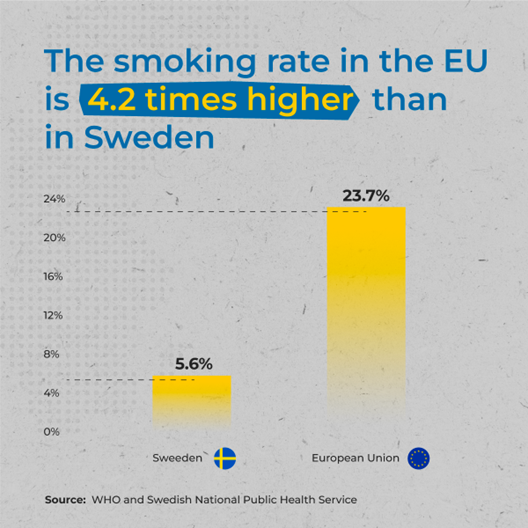As the newly elected European Parliament convenes, there lies a golden opportunity to make significant strides toward the ambitious yet achievable goal of a smoke-free Europe. By aiming for a smoking rate of less than 5% by 2040, the Parliament can transform public health across the continent. However, achieving this goal requires embracing science, listening to consumers, and learning from real-life examples such as Sweden.
Making Europe smoke-free is indeed a monumental task, but it is doable if future regulations are grounded in reality. Unfortunately, we are currently in the middle of a misperception epidemic regarding the harm reduction potential and risks of alternative nicotine products. Alarmingly, 74% of smokers worldwide wrongly believe that vaping is equally or more harmful than smoking. This widespread misconception is a public health crisis in itself, deterring thousands of smokers in the EU from switching to less harmful alternatives. The new Parliament must address this crisis head-on.
Over 100 organisations and government institutions worldwide agree that vaping is significantly less harmful than smoking. This consensus is supported by a systematic evidence review from Cochrane, a British public health non-governmental organisation. Cochrane’s systematic reviews are globally recognised as the gold standard in health evidence, and their findings confirm that vaping aids smokers in quitting.
Additionally, respected public health authorities, including the UK’s National Health Service (NHS), have taken steps to debunk significant misconceptions about vaping. The NHS published a guide titled "Vaping Myths and Facts" to provide smokers with high-quality, evidence-based information. Such efforts highlight the importance of accurate communication and regulation based on scientific evidence.

Sweden’s approach to becoming smoke-free sets a remarkable precedent that the EU should copy. Rather than banning safer nicotine products, Sweden has embraced harm reduction, endorsing the use of products like snus, nicotine pouches, and e-cigarettes. This strategy has positioned Sweden on the verge of becoming the first smoke-free nation, serving as a model for global tobacco harm reduction strategies.
The upcoming revisions of the Tobacco Products Directive (TPD) and the Tobacco Tax Directive (TTD) will be monumental decision points for the EU. The EU faces a critical choice: continue down the unsuccessful path of prohibition and over-regulation or acknowledge and adopt the successful Swedish model of harm reduction. Debates about flavour bans or the prohibition of products such as nicotine pouches threaten to derail the smoke-free goal. These restrictive measures would not only hinder smokers' access to less harmful alternatives but also perpetuate the very public health issues we aim to resolve.
It is essential for the new Parliament to recognise that well-regulated, harm-reducing products can save lives. By fostering an environment where smokers are encouraged to switch to less harmful alternatives, we can drastically reduce smoking rates and improve public health outcomes.
In conclusion, the new European Parliament has a unique opportunity to make history by driving Europe toward a smoke-free future. By listening to science, understanding consumer needs, and learning from successful examples like Sweden, Parliament members can enact regulations that truly benefit public health. With the right approach, a smoke-free Europe is within our grasp.
Sign up to The Parliament's weekly newsletter
Every Friday our editorial team goes behind the headlines to offer insight and analysis on the key stories driving the EU agenda. Subscribe for free here.